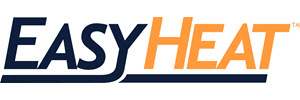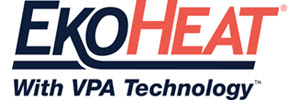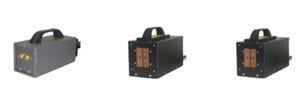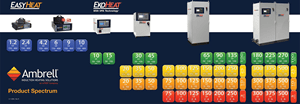Hermetic Sealing with Induction
Hermetic Sealing with Induction
- Home
- Applications
- Metal/Glass Sealing
How does Metal-to-Glass Sealing with Induction Work?
Hermetic sealing is the process of creating a container that is airtight. It is commonly used to encase electrical mechanisms, as well as to contain functional gases.
Induction generates an electromagnetic field in a work coil that induces currents in the conductive material of a workpiece placed within or near the coil. Friction from these currents elevates the temperature of the workpieces to be heated.
Benefits of Using Induction Heating for Hermetic Sealing
Our induction heating systems provide hermetic sealing processes with reliable, repeatable, non-contact and energy-efficient heat, focusing heat to a specific area of the part.
Induction offers a process without open flame
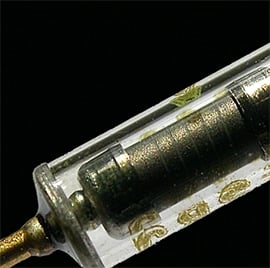
Select from our collection of metal-glass sealing notes, taken from years supporting our customers. Read how we helped to solve their process heating challenges.
 Heating a Kovar Ferrule for Glass Soldering
Heating a Kovar Ferrule for Glass Soldering
The solder formed a relatively uniform domed seal around the fiber despite the asymmetry of the open C coil. It took under 10 seconds to heat the part to soldering temperature
 Soldering windows to time indicator housings
Soldering windows to time indicator housings
Soldering soda lime glass metal edged windows to steel time
 Hermetically sealing glass-enclosed resistors
Hermetically sealing glass-enclosed resistors
Induction heating provides precise, consistent heat to very small parts resulting in repeatable, quality seals. By heating with medium frequency, arcing (which occurs at high frequencies) is avoided.
 Soldering a kovar piece with glass to a copper base for a photon light source
Soldering a kovar piece with glass to a copper base for a photon light source
Induction heating provides ability to use same equipment for both assembly and repair, hands-free heating that involves no operator skill for manufacturing, and uniform control of heat from part to part
 Hermetic sealing: SS rods & glass preforms
Hermetic sealing: SS rods & glass preforms
Induction melting provides hands-free heating that involves no operator skill for manufacturing, amounts of glass are precisely controlled by the glass preforms and even flow of glass creates aesthetically pleasing bond.
To heat selected areas of a glass lined steel tank to 16000 F in order to perform repairs of cracks and chips.
To heat a stainless steel housing to 18750 F in order to fuse a piece of R6 glass to the inside of the housing.
Our Induction metal-glass sealing Systems and Equipment
Four Ways To Contact Ambrell for Support
AMBRELL CORPORATION
1655 Lyell Avenue
Rochester, NY 14606
United States
F: +1 585 889 4030
AMBRELL B.V.
Holtersweg 1
7556 BS Hengelo
The Netherlands
AMBRELL Ltd.
Unit 6, Space Business Centre
Tewkesbury Road
Cheltenham, GLOS, GL51 9FL
United Kingdom
F: +31 546 788 154


 Repair of Glass Lined Tank
Repair of Glass Lined Tank Stainless Steel Housing
Stainless Steel Housing